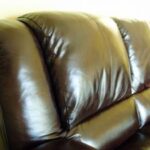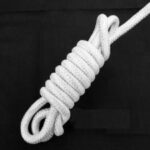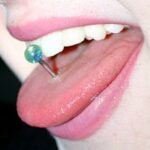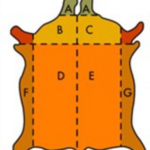According to Wikipedia, a flogger can be defined as the following:
A multi-tongue whipping implement specially made to use for such fetish and/or erotic BDSM flogging, usually of the cat o’ nine tails -, scourge- or martinet-type, and often so called, but often made more decorative (e.g. colorful) and sometimes in less cruel materials than tough leather, such as soft-fibred cord.
Floggers are often used in impact play in BDSM and are a beloved implement because it can be either thuddy or stingy. I have written a complete article on the art of flogging and what factors needs to be taken into account when flogging a submissive. The link to this article is as follows:
http://www.associatedcontent.com/article/976400/bdsm_101_the_basics_of_flogging_for.html?cat=7
This article is not about flogging but about the intricacies of flogger design and what one needs to take into account when ordering a flogger from a whip maker. This article will help the practitioner who is already well versed in the art of flogging, as he or she would understand the mechanics of the flogger better.
The thick, flowing bundle of strips at the business end of the flogger is called a tress. A flogger gets most of its effect from the final few inches of the tress. Everything else in the design exists to deliver those tips to the target accurately and at the desired force and speed.
A well-designed flogger should be able to make the tips hit together in a tight bundle even the speed is reduced or could spread out or fall out in what designers would call a “cascade” of tress tips. That is why you would want to see uniform width and cleanly cut material when you look at the tress. New floggers should have uniform tips and the tresses should all be of equal length. When the whip is used more frequently the tresses may stretch or fray. It all depends on the material used to make the flogger. Deer and moose hide would stretch while suede may fray. You might want to trim the tresses occasionally with sharp scissors.
Cowhide in the last few years is not dyed through all the way, so sometimes whip makers will dye the edges of the leather. This has come to be associated with good quality, but you need to be careful when you buy or order a new flogger that this is not just hiding bad craftsmanship.
We will assume that your arm action is constant when it comes to the speed and the power of your stroke. The way you should judge what the performance of the flogger would be will be to look at the tress design. Factors like tress length, width, thickness, shape, texture and hardness of the individual tresses will all affect what the flogger will feel like or whether it will bruise or break skin or not. The length and the mass of the total tress bundle will also affect performance and you always need to specify your needs to the whip maker to ensure you get what you wanted. A good whip maker will be able to give you specifications as to what materials and what specifications will result in what type of flogger whether it will just give thud or whether it will sting.
The raw number of tresses is only half the story as well as leather varies in thickness. In thicker leather, strips taken from different places may also vary in thickness. The thickness of the individual tresses needs to be considered, or else the diameter of the bundle must be specified.
In choosing or designing a flogger you need to consider the following as well. Denser tresses move faster and hit harder than “airy” ones. Soft, flexible tresses are more sensual and less likely to do skin damage than hard, stiff ones. Thin, hard, narrow or round tresses in sparse bundles are intense and severe. Wider tresses have more wind resistance than narrow ones and move slower. The narrower tress has more sting and the wider more slap.
Materials used include cowhide, Cow suede, deer, moose, elk, rubber, cordage, pigskin and pig suede and horsehair. These materials are generally considered more safe and sane than some of the weirder materials out there like chain, fish and reptile skin and plastic tubes.
The flogger you love so much with that right balance might be attainable and can be tested in several ways. The handle and the tresses must be perfect and work together to provide the balance for each individual dominant. This you must discuss with your whip maker and be sure to handle some of the whips and floggers he or she has made to help you decide. If you order online, you normally would go for the same whip maker you used before that gave you that perfect flogger. Buying a flogger is an art and not to be taken lightly as something like a flogger should not be returnable in my opinion.





